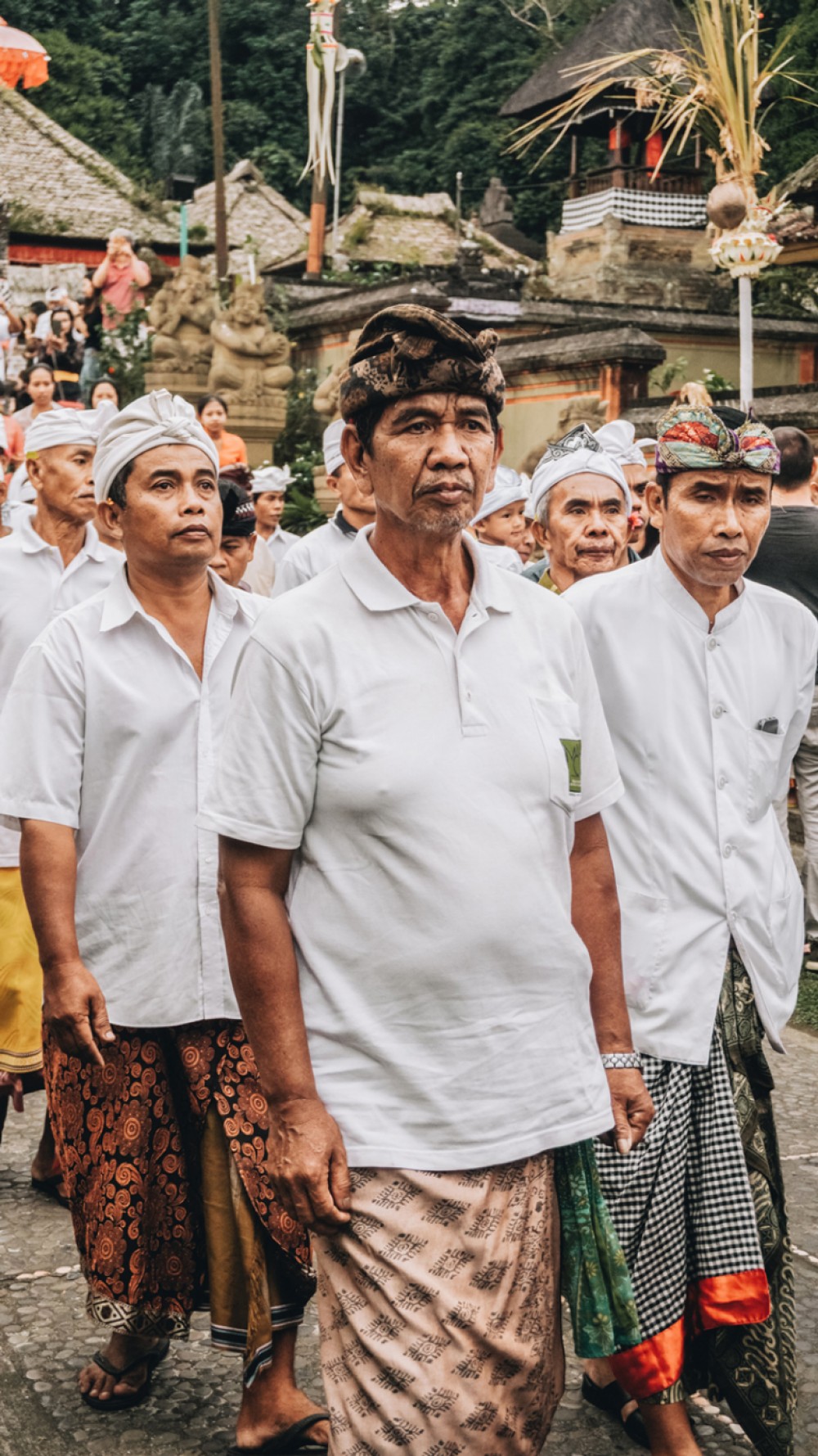Balinese community is compromised of the people that holds their vividly rich culture and beliefs close to their hearts and they do play an important role in their routine life. It can be seen through their routine life dressing as well. Every item they use in the traditional attire holds a deep meaning behind it.

Pakaian adatis normally known as the formal traditional attire which is obligatory during religious ceremonies or events. The men’s attire consists of a
kamen, which is a rectangular cloth that covers the hips and legs, and a waist sash, which indicates the separation of a person’s lower nature from that of the mind; a
saput, which is a secondary hip cloth; a shirt or jacket; and oftentimes, a
kris dagger. A Balinese man, however, is never completely dressed without an
udeng, the traditional headdress.
Udeng is an iconic feature in the traditional attire of the balinese men. It is a square cloth that is properly tied around the head bearing the symbol of or expression of ngiket manah – the concentration of the mind. The human mind is the one that controls every action of a person, hence the control and concentration of the mind is most important when participating in a holy procession.
Udeng isn't tied on a random pattern around the head, there is a proper etiquette of tying the udeng which holds a meaningful symbolism. The right fold which should be higher than the left means the superiority of dharma (good behavior) over the adherma (bad behavior). The knot must always be placed in the middle of the forehead which is a symbol of focus origination of mind, while the straight upward edge symbolises a focus to worship God Almighty.
The concept of Tri Murti as a unity in Hinduism is also represented in the udeng. The pull of edge of the right cloth symbolisesWisnu, the pull of the edge of left cloth symbolises Brahma, while the edge of the cloth above that is pulled downwards symbolises Shiva.
Wearing of Udeng indicated that a man is participating in a holy ceremony whether a temple, graveyard or a life rites ceremony at home. Different variation of colors and patterns are seen in Udeng that are used for different occasions. White Udeng symbolize purity and is worn during temple ceremonies or anniversaries; black udgen is worn during funerals; Batik Udeng is worn during social events like traditional events or town meetings; Red and other colored Udengs are normally worn by Balinese gamelan musicians, dancers and fashionably creative teenagers.
Udeng also has three categories:
Udeng jejateran is the typical headdress worn for worshiping activities with a overhand knot in front placed between the hand symbolizing the third eye or the symbol of cundamani.
Udeng dara kepak, this one is used by the leaders with a unique feature that covers the head, hence symbolizing the the ability of a protector of people.
Udeng beblatukan, used specifically by pemangku or Balinese priests that have a characteristic of only a headcover with a back knot tied to the bottom, a symbol of prioritising public interest rather than personal interest.